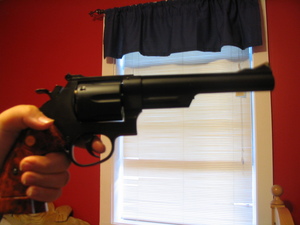I have been in the marine hobby for over 30 years, not only on a personal level maintaining multiple marine reef and fish only systems, but at the retail end as well working at two local pet shops for years. Because of my diverse experience, I will offer some detailed information regarding the pistol shrimp and why you may want to incorporate Pistol shrimp into your aquarium. Pistol shrimp can play a vital role in creating a diversified approach to your standard invertebrate livestock profile. Moreover, they tend to be as unique and diverse as the biotopes that make up the delicate reefs of the world. These benthic dwellers possess a uniqueness unlike any other invertebrate commonly encountered in the marine hobby. The fact that pistol shrimp are basically blind and are normally encountered in a host relationship with many kinds of gobies is unique in it’s own right. Only a few other scenarios play out in this bizarre behavior such as a clown fish and anemone or a decorator crab and a sponge that it uniquely displays all over its body.
There are roughly 500 species of pistol shrimp in the reefs throughout the world. However, only a handful make their way into pet shops or online venues for marine aquarists to select from. Believe it or not, many of these diverse creatures are introduced into our aquariums unexpectedly as hitchhikers on liverock or coral. For the unsuspecting aquarist, the sound made by a pistol shrimp’s oversized claw, that snaps shut when scarred or protecting itself from predators, can be somewhat alarming especially since first response upon hearing this sound normally means one thing, Mantis Shrimp. These are the destructive denizens of the saltwater aquarium hobby. Their brut strength combined with their inquisitive nature and the fact that these animals are very smart poses all sorts of problems to reef inhabitants and aquarists alike. If you are lucky, the popping sound is just a wake up call or reminder that a pistol shrimp resides in your aquarium.
Pistol shrimp are a rather small crustacean rarely exceeding two inches in length. Most of them are in the half inch to inch range maing them one of the smaller shrimp species available to marine aquarists. The biggest difference between a pistol shrimp and one of its cousins such as the peppermint or cleaner shrimp is the fact that one claw is larger than the other, similar to a Maine lobster. This is their defense and offense mechanism. The larger claw is able to open and shut with such force that it is comparable to a bullet being shot out of a gun. The sound associated with this snapping noise tops out at around 218dB which easily exceeds the threshold for pain in the human ear which registers at a mere 120dB.
Coloration and patterns often illustrated with pistol shrimp is nothing exotic like that found with Mandarin fish, Angelfish, Wrasses, Anthias’ or Butterflyfish. Usually two or three toned colors in a yellow, red or white/cream coloration with spots or thin lines along the length of the shrimps carapace is all.
As I mentioned earlier, their are only a handful of pistol shrimp encountered in the marine hobby. The more commonly found species of pistol shrimp are the Tiger, Randall’s, Michael’s, Dijibouti and Red Spot. Husbandry and compatibility requirements are the same for each species. This means maintaining stable and optimal water parameters with regards to pH, salinity, alkalinity, calcium and iodine, especially. Refraining from housing larger fish such as grouper, Lionfish, Triggerfish, Squirrelfish and Moray Eels or smaller denizens such as small ornamental shrimp, gobies and blennies will afford you the best scenario for success compatibility wise. You never want to add copper to water housing pistol shrimp or any invertebrate for that matter as it will kill them almost instantaneously.
Feeding pistol shrimp is not very difficult at all since these animals are scavengers that remain in the sand and rocky areas of a tank foraging for tidbits of food that settle near their burrows never wandering more than a couple inches from their home. They will accept flake, pellet or frozen fare and are not finicky when it comes to feeding. Target feeding can be implemented using a feeding stick or turkey baster but isn’t necessary as they will find food as it settles to the ground or floats by.
The really interesting part of maintaining a pistol shrimp is that they carry out a symbiotic relationship with many species of gobies. By this, I mean, they will actually share their burrow with one of the many prawn or shrimp gobies available in the hobby. This relationship is similar to that of Sea Anemones and Clownfish. The pistol shrimp provides the goby protection while the goby provides the shrimp with food and keen eyesight for unsuspecting predators since pistol shrimp are basically blind. Pairing up a pistol shrimp and goby is fairly easy to do. Basically, all you need to do is place the pistol shrimp in the tank and let it burrow which will happen almost instantaneously. After a few minutes place the goby in the tank near the shrimp’s burrow and the goby will more than likely head for the burrow and the rest is history.
Hopefully after reading this article, you will have a better understanding of pistol shrimp and what they can add to your diverse bioload. These are truly interesting and fascinating animals that can provide a dimension, not encountered in your aquarium before.





